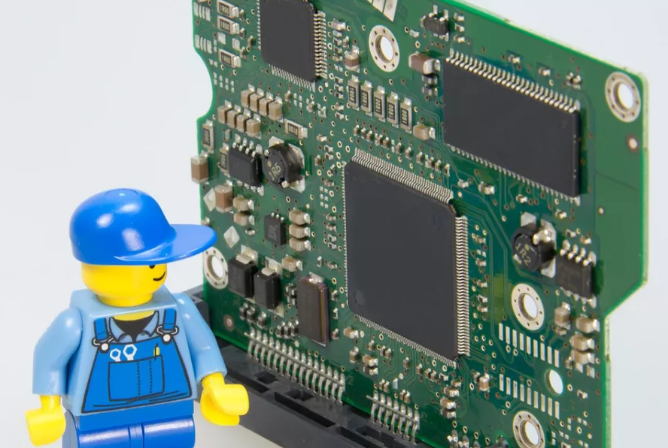Do you know “why PCB must be baked before SMT passes the reflow oven after the expiration date of PCB”?
The main purpose of PCB baking is to remove moisture and moisture, and to remove moisture contained in PCB or absorbed from outside, because some PCB materials can easily absorb water molecules.
In addition, PCB production can also absorb moisture in the environment after being placed for a period of time, and water is one of the main killers causing PCB popcorn or delamination.
Because when PCB is placed in the environment with temperature over 100 ℃, such as reflow furnace, wave soldering furnace, hot air leveling or hand welding, water will become steam, and then rapidly expand its volume.
The faster the heating speed is, the faster the expansion of water vapor will be; the higher the temperature, the larger the volume of water vapor; when the steam cannot escape from the PCB immediately, there is a good chance to expand the PCB.
In particular, the Z direction of PCB is the most vulnerable. Sometimes the via holes between layers of PCB may be broken, and sometimes the separation between layers of PCB may be caused. Even more serious, blistering, swelling and popcorn can be seen on the surface of PCB;
Sometimes, even if the PCB can’t see the above phenomenon on the surface, it actually has internal injury. As time goes on, it will cause the function instability of electrical products, or CAF and other problems, and eventually lead to product failure.
True cause analysis and Prevention Countermeasures of PCB popcorn
In fact, the baking procedure of PCB is quite troublesome. When baking, the original package must be removed before it can be put into the oven, and then the temperature should be higher than 100 ??. However, the temperature should not be too high, so as to avoid excessive expansion of water vapor during baking, which will burst the PCB.
Generally speaking, the baking temperature of PCB is set at 120 ± 5 ℃ in order to ensure that the moisture can be eliminated from the PCB body, and then the SMT line can be assembled and welded in the reflow oven.
The baking time varies with the thickness and size of PCB, and for the thinner or larger PCB, it is necessary to press the board with heavy weight after baking, which is to reduce or avoid the tragedy of PCB bending deformation caused by stress release during the cooling period after baking.
Once the PCB is deformed and bent, the problem of offset or uneven thickness will appear when SMT printing solder paste, which will cause a lot of welding short circuit or empty soldering and other defects.
PCB baking condition setting
1. PCB should be sealed well within 2 months from the date of manufacture. If the PCB is placed in a temperature and humidity controlled environment (≤ 30 ℃ / 60% RH, according to ipc-1601) for more than 5 days, the PCB should be baked at 120 ± 5 ℃ for 1 hour before being put on line.
2. PCB should be stored for 2-6 months beyond the manufacturing date, and should be baked at 120 ± 5 ℃ for 2 hours before going online.
3. PCB is stored for 6-12 months beyond the manufacturing date, and should be baked at 120 ± 5 ℃ for 4 hours before being put on line.
4. PCB is stored more than 12 months after the date of manufacture. It is basically not recommended to use it, because the bonding power of multi-layer boards will age with time. Quality problems such as unstable product function may occur in the future, which will increase the possibility of repair in the market. In addition, there are risks of board explosion and poor tin eating during the production process. If it has to be used, it is recommended to bake at 120 ± 5 ℃ for 6 hours, and put a large number of preproduction solder paste into production. It is confirmed that there is no solder problem before production.
Another reason why PCB is not recommended to be used for a long time is that its surface treatment will gradually fail with the passage of time. For ENIG, the shelf life of the industry is 12 months. After this aging, it depends on the thickness of ENIG layer. If the thickness is thinner, the nickel layer may appear in the gold layer due to diffusion and form oxidation, which will affect the reliability. Do not be careless.
5. All baked PCBs must be assembled within 5 days, and those without
PCB assembly must be baked at 120 ± 5 ℃ for another hour.

